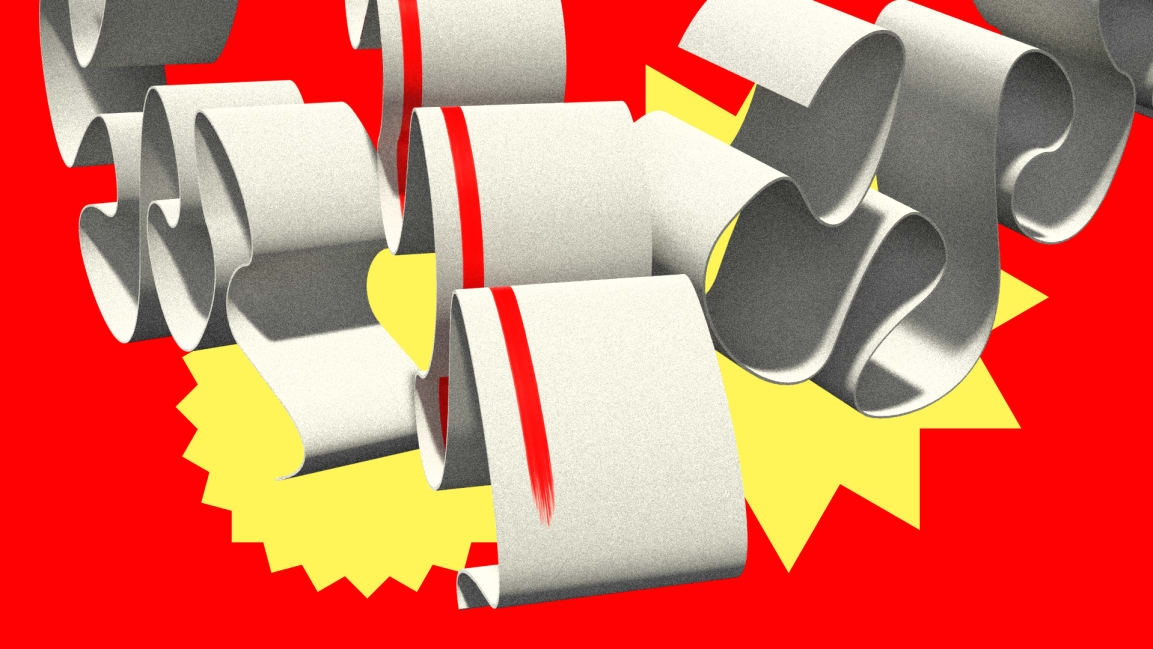Receipts are secretly really bad–why are we still using them?
If you walk into a neighborhood coffee shop in San Francisco and buy a drink, you’ll probably pay on a Square reader and get your receipt by email. If you walk into the Walgreens next door, you might get a foot-long paper receipt. A new bill in California aims to shift all stores to a default digital version, and raises the question of why we’re still cutting down trees and lacing paper with BPA when the technology exists for an alternative.
“We started looking into this idea of receipts and whether we should move people towards electronic receipts,” says Phil Ting, a California assemblymember from San Francisco. His staff calculated the amount of paper and water wasted to create receipts that often end up in the trash seconds later, and then learned about the health issues that receipts also pose. “As we did more research, we found out the receipts aren’t just printed with regular inkjet ink, which is recyclable. It’s [coated] with BPA which is not recyclable, and actually toxic.”

Bisphenol A, or BPA–the same chemical that was banned in baby bottles and sippy cups in 2012 because of health risks–is still commonly used to coat the paper in cash registers. (The chemical, which reacts and changes color when it’s heated, is a cheap way to print.) Bisphenol S, an alternative that is also used so products can be touted as “BPA-free,” is similarly linked to health risks. Worse, the coating on receipts is found in far greater quantities than it ever was in baby bottles or cans, and easily absorbed into skin.
“It’s like invisible talcum powder, in that it comes right off onto your hand and goes right through your skin, and it’s taken up rapidly in the blood,” says Frederick vom Saal, an endocrinologist and professor emeritus at the University of Missouri who has studied the chemical for several years. “It’s taken up in women about three times more rapidly than it is in men. That doesn’t mean it’s at innocuous levels in men. It just means the amounts that we see after handling a thermal receipt in women are particularly scary.” (BPA found in the lining of cans and some other products is polymerized, or formed in chains, so it’s less easy for the body to absorb than the form on receipts.)

The chemical, which mimics estrogen, is a hormone disruptor, and can increase the risk of miscarriage and affect sperm production, among other problems. Exposure to BPA is also associated with a higher risk of insulin resistance, diabetes, obesity, and heart disease. “Everything else being equal, if you’re exposed to elevated levels of BPA, your probability of having that complex of diseases is significantly increased,” says vom Saal.
For cashiers who handle receipts all day long, the situation is particularly bad (and why you might have noticed some cashiers wearing gloves as they work). But even shoppers are at risk. In one recent study, vom Saal looked at the human impact of a dose of BPA equal to what a casual shopper might experience; the chemical changed the subjects’ insulin production.
Some alternatives exist. In late 2018, Trader Joe’s announced that it had transitioned from receipts with BPA or BPS to a new type of receipt that uses a coating of ascorbic acid, or Vitamin C. But researchers suggest that even this innocuous-sounding option may still have problems. The bigger question may be why we still need physical receipts at all. Some critics of Ting’s bill have raised the issue of privacy. But anyone who shops online already gets receipts by email, and in the rare cases when a receipt is actually necessary for a return or reimbursement, those emails are often easier to find than paper. Automatic emails could be linked to credit cards; the bill also leaves the option for customers to request a paper receipt.

“Everything you buy online, when you go to Amazon or buy anything over the web, none of those receipts are on paper, they’re all emails,” Ting says. “So our habits have already greatly moved in this direction. It makes sense to make the final push. And my incentive was greater once I found out that these receipts aren’t recyclable, are toxic, and aren’t compostable.”
When receipts end up in recycling bins, they contaminate the rest of the waste stream; vom Saal says that BPA is now also found in recycled paper. Receipts in compost bins can end up later contaminating farms growing our food. In landfills, he says, the chemical can seep into groundwater.
There’s also the issue of paper: Ting cites a Green America report that found that we use up to 10 million trees and 21 billion gallons of water to produce receipts. But the problem of the chemical coating on receipts, he says, gave him more incentive to work on the problem. He’s hoping that other states follow California’s lead. “If you look at the whole BPA-free movement, it wasn’t that long ago that baby bottles all had BPA,” he says. “California was the first state to really take the lead on that issue today, and now it’s common to see bottles all say they’re BPA-free.”
(32)



